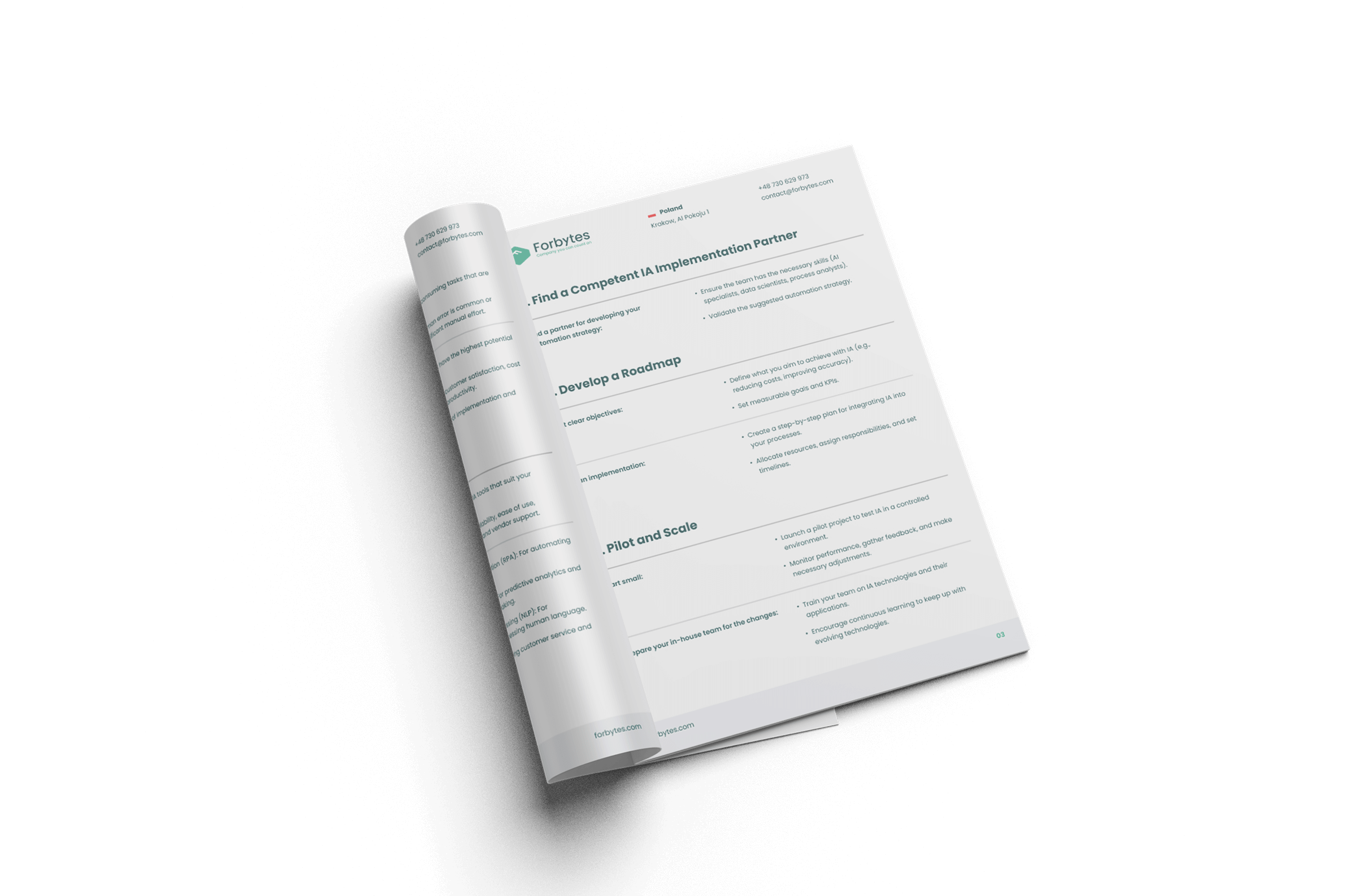As a business owner, you know how tough the retail industry can be. Customers’ tastes change overnight. Tech trends come and go. And competition is fierce.
On top of that, supply chains are unpredictable. One day, you can be out of stock. Next, you can have too much inventory that collects dust.
Plus, with the rise of e-commerce, customers expect more than ever, especially a personalized shopping experience. But focusing on outdated reports won’t lead to success in the retail industry.
Fortunately, retail business intelligence (BI) helps you tackle these challenges head-on. BI turns your data into clear and useful insights. So, you can spot trends early and manage inventory smarter. Whether you’re looking to boost sales, cut costs, or improve your shopping experience, BI gives you the tools to stay ahead.
In this article, we’ll show you how business intelligence in retail can transform your company and share practical steps to get started. Let’s dive in!
What Is Retail Business Intelligence?
Retail business intelligence is about using data and extracting valuable insights to make smarter decisions. It helps you track customer behavior, analyze sales, and manage operations more efficiently.
With BI, you can use these insights to improve your business. For example, you might introduce new products, change your marketing strategy, or adjust prices. And the best part? You have data to support your decisions, not just guesswork. That means fewer surprises and more positive outcomes.
Business intelligence in the retail industry involves three main stages:
![]()
- Data collection: BI tools gather customer data from various sources, including your online store, POS system, social media, or inventory system.
- Data integration: BI brings all that data together in one place so you can easily compare and analyze it.
- Data analysis: BI tools extract valuable insights from customer data to help you decide what actions to take next.
As you can see, collecting data from different channels and putting it into easy-to-read reports is crucial for tracking your business performance and making more informed decisions.
How Business Intelligence Is Transforming the Retail Industry
Without reports and analytics, retail business owners’ hands are tied. They can’t understand what works and what should be left behind. Business intelligence strategy changes the retail industry by turning data into valuable insights.
Business analytics and business intelligence solutions in retail have shifted the following areas by making them a key part of companies:
First, earned media analysis is used by retailers to understand what’s driving traffic to their site, like social media, organic search, or email. For example, if you see a lot of traffic from Instagram, you can focus more on Instagram ads to attract buyers.
Second, product analytics is a popular tool in retail for data analysis. It helps you identify which products are selling well and which aren’t. For example, if your new hoodie is flying off the shelves, but your old shoes aren’t selling, e-commerce business intelligence helps you restock the popular items and stop selling what’s not moving.
Third, retail business intelligence has brought customer analytics into the spotlight. You can track how clients interact with your brand. For instance, if customers stay longer on your summer collection page, you know it’s time to promote those products more.
Finally, retailers can’t imagine their business without predictive analytics. It helps them forecast what’s coming. It can tell them which products will be hot next season or which customers might leave. For example, data analytics might show that a specific product can be sold out soon, so retailers can restock it before this happens.
Top 5 Use Cases of Retail Business Intelligence Solutions
By now, you know that investing in BI is a smart move for retailers. But what are the applications of retail business intelligence? Let’s break it down with real-world examples.
Sales performance analysis
BI tools help you see how your sales are doing, whether online or in-store. You’ll know what’s selling fast and what needs a boost. For example, Macy’s uses Power BI to track sales across all their platforms. So, they can make smarter business decisions and receive higher profits.
Customer segmentation
Not all customers are the same. Retail BI helps you analyze purchasing behavior, demographics, and preferences so you can create personalized marketing campaigns. Sephora does data analysis brilliantly. They use retail BI to tailor promotions and recommendations based on customer interests. As a result, their shoppers are more engaged and happier.
Store performance evaluation
BI dashboards give you insights into conversion rates and transaction values. With this data, you can identify which locations are thriving and which need improvement. Target, for example, uses BI to monitor store performance and make data-backed decisions about staffing, promotions, and layouts.
Supply chain optimization
Managing inventory is tough: you need enough stock but not too much. BI helps by tracking inventory in real time, so you avoid running out or overstocking. For example, Walmart uses BI to predict demand, cut waste, and streamline logistics to save money.
Workforce management
Your team is just as important as your products. Retail BI helps track performance, attendance, and productivity. So, you can improve scheduling and training. Rite Aid uses a BI-powered system to ensure they have the right staff at the right time.
In a nutshell, these applications of retail BI prove that the scope of BI is broad. And more and more companies are opting for it to turn their data into smart insights.
Retail BI Solution: 12 Key Features
Now that you know how BI in retail works, let’s explore what makes a great retail BI solution. Here are the key features to look for:
- Executive dashboards: Show key business data in an easy-to-read format, helping leaders make quick decisions.
- Location Intelligence: Maps customer locations and tracks trends for better sales and marketing strategies.
- “What If” analysis: Predicts outcomes of business decisions using data and AI to plan smarter strategies.
- Interactive reports: Let users explore data in detail, spot trends, and make better decisions.
- Metadata layer: Simplifies reporting by using plain business language instead of complex coding.
- Ranking reports: Ranks best- and worst-performing products, regions, or employees to highlight priorities.
- Self-service data discovery: Helps users quickly find, compare, and share relevant business data.
- Integration with other systems: Connects with existing tools for seamless data sharing and analysis.
- Cross-platform compatibility: Works across different devices and systems for easy access and collaboration.
- Customizable dashboards & reports: Let users adjust data views to track trends and insights.
With these features in your BI tool, you’ll be well-equipped to steer your data in the right direction, leading to data-driven decisions.
Benefits of Business Intelligence in Retail
According to Statista, the BI software market is expected to reach $29.51 billion in 2025. By 2029, it could grow to $36.35 billion with an annual growth rate of 5.35%. Impressive, right?
The BI software market is booming, and for good reason. Businesses are adopting BI because of the many benefits it offers. But what exactly can retailers gain from business intelligence? Let’s break it down.
More personalized marketing
Today, 80% of consumers are more likely to buy from a company that offers personalized services. Shoppers expect tailored experiences, like discounts on products they want or recommendations based on past purchases. Such an approach builds customer loyalty.
Retail business intelligence makes personalization in e-commerce easy. Instead of sorting through data manually, BI tools do the work for you. They analyze buying patterns and customer behavior, helping you send the right offers to the right people at the right time.
Better inventory management
For 43% of businesses, inventory management is the biggest challenge. Too much stock wastes space and money. Too little stock means losing customers to competitors. Finding the right balance isn’t easy, but retail BI helps.
With business intelligence in retail, you’ll know which products sell the fastest and which might run out soon. You’ll see when to reorder and what’s about to expire. These insights help you make better decisions, reduce waste, and keep customers happy.
Staying ahead of the competition
BI helps you spot trends before they explode. Whether it’s a hot new product, a shift in customer preferences, or an upcoming supply chain issue, you’ll have the data to act faster than your competitors.
This kind of first-mover advantage can be the difference between leading the market and playing catch-up. Companies using data analytics can make decisions five times faster than those that do not.
Smarter financial decisions
Retail is full of financial risks: unexpected expenses, cash flow issues, and even fraud. Retail BI tools keep your finances in check by tracking costs, monitoring profitability, and even flagging suspicious transactions before they cause problems.
Instead of relying on gut feelings, you’ll have clear, data-driven insights to guide your decisions. Retail business intelligence can help identify trends and optimize financial strategies for maximum impact.
As you can see, retail BI offers many benefits by giving companies more opportunities in the market. But can BI be challenging? We hope to help you explore that further.
Challenges of Implementing Retail Business Intelligence Software
Using BI in retail isn’t always easy. Here are some common hurdles and how to tackle them:
First, BI only works if your data is accurate. So, if your data is messy, retail business intelligence is a bad option. That’s why clean up duplicates and combine info from all sources, like POS and e-commerce sales.
Second, your systems are not connected. Your POS, CRM, and marketing tools all collect different data. So, it’s difficult to extract insights using BI. We recommend using intelligent automation or AI to pull everything into one place instead of doing this manually.
Third, another obstacle associated with business intelligence in retail includes security risks. BI tools handle sensitive data, so strong security is a must. Look for features like encryption, multi-factor authentication, and 24/7 monitoring to keep your data safe.
Finally, weak data visualization is a restraining force for BI. Static reports and clunky dashboards make retail BI harder to use. Choose a tool with interactive dashboards, easy filtering, and mobile support for a smooth experience.
By tackling these challenges, you’ll get the most out of your BI tool and make smarter business decisions. In addition, we want to share best practices that will assist in implementing a retail business intelligence solution more successfully.
Best Practices for Implementing Business Analytics and Business Intelligence Solutions in Retail
Retail business intelligence can transform your company if you use it right. But simply having data isn’t enough. You need the right tools, a clean data process, and a team that wants to use the insights. So, we offer best practices that can help you succeed with all this stuff:
- Choose the right BI tools: Your BI strategy is only as strong as the tools you use. You may have great e-commerce, POS, and inventory management systems, but if they don’t work together, you’ll miss valuable insights. The right software helps you get clear, actionable data instead of guessing.
- Keep your data clean: Bad data leads to bad decisions. To keep data accurate: do spot checks, set clear data rules, and standardize manual entries. Solid data equals solid strategies.
- Make data a team effort: Not everyone enjoys working with numbers, but they’ll care when they see how data helps them. Sales teams can earn more with smarter selling, inventory teams can automate stock checks, and staff can get better shifts with smarter scheduling. When your team sees data as a helpful tool, they’ll use it.
- Track what matters: To make BI work, set clear goals and track whether it’s delivering results. If better inventory management is your goal, check if stockouts are decreasing. Retail business intelligence isn’t a one-and-done solution; keep analyzing, adjusting, and refining to stay on track.
- Make retail BI part of your strategy: BI isn’t just numbers, it’s your guide to smarter decisions. From inventory and staffing to marketing, data should shape your strategy. With BI tools, you already have the data; you just need to use it wisely.
Hope these best practices help you implement retail business intelligence. But if you’re still unsure how to do it, we have a great story about how Forbytes integrates BI into clients’ businesses.
Forbytes’ Expertise in Integrating Business Intelligence
At our company, retail business intelligence is a top priority. We often help businesses integrate BI tools or build smarter data systems.
One of our recent clients, a leading European logistics company, had been automating warehouses for years. But as they grew, their data became scattered across multiple systems, making it tough to track efficiency, manage invoices, and make real-time decisions. They needed a smarter way to use their data, so they turned to us.
We built a modern BI platform using Azure Data Lake Gen2 and Databricks, organizing data into structured layers. With Power BI, we turned complex datasets into real-time dashboards, giving them instant insights into operations and finances.
The impact was immediate. Billing errors disappeared, saving lost revenue. Reports that used to take days were ready in seconds, freeing teams from manual work. Leadership could finally track performance, optimize workflows, and make faster, smarter decisions.
Now, they’re not just collecting data, they use it to grow and stay ahead in the logistics industry.
If you’d like to dive deeper into this success story, we’d be happy to reveal more details. It might inspire you to change your approach to data management.
Implement Retail BI Solutions with Forbytes
With BI, the future of the retail market looks promising, offering new opportunities for data management and business insights. There’s no doubt that implementing a retail BI solution is a challenge, but it’s a worthwhile investment.
If you need help, Forbytes is here for you. With our expertise in business intelligence, we can guide you through this journey and deliver a smart solution. Just reach out, we’re always ready to assist!

Our Engineers
Can Help
Are you ready to discover all benefits of running a business in the digital era?

Our Engineers
Can Help
Are you ready to discover all benefits of running a business in the digital era?











